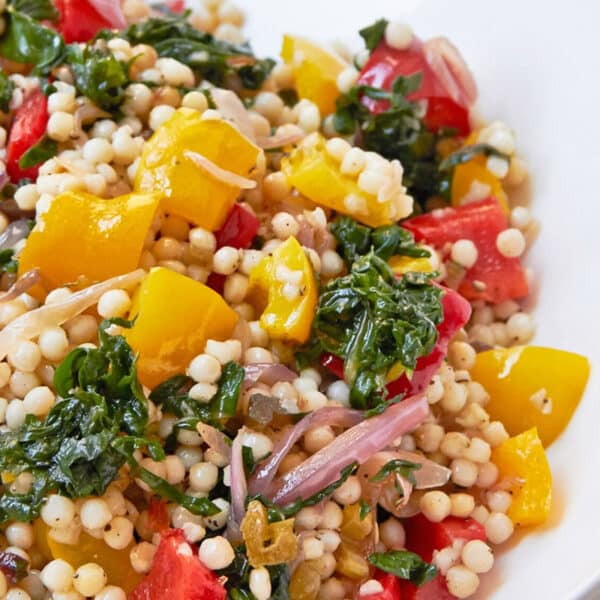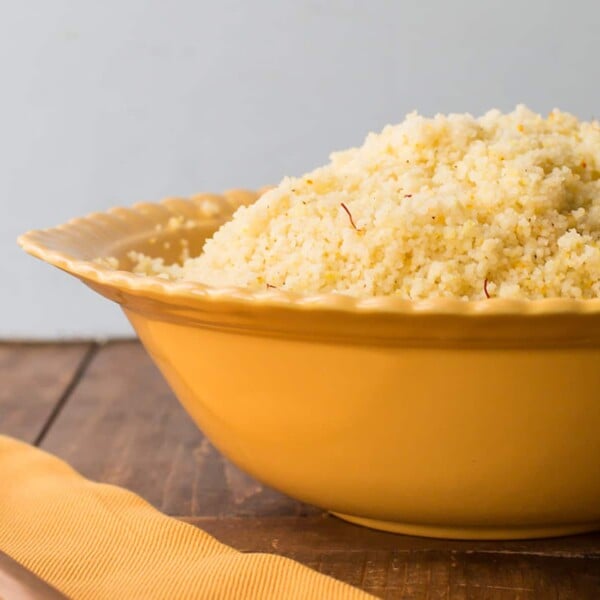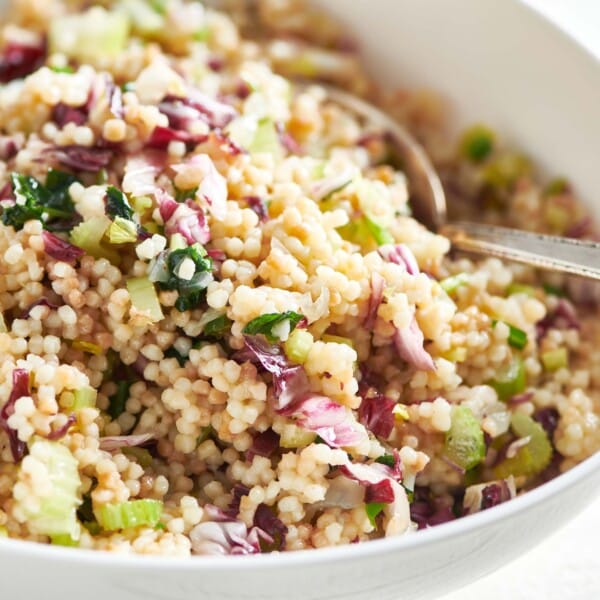How to Make Perfect Couscous on the Stove
Updated May 27, 2025
This post may contain affiliate links. Please read our disclosure policy.
Couscous is a slightly nutty, mild-flavored, teeny tiny pasta that cooks up just like rice. It takes about 15 minutes to make, and it's great for soaking up sauces, adding to soups and stews, and turning into salads.
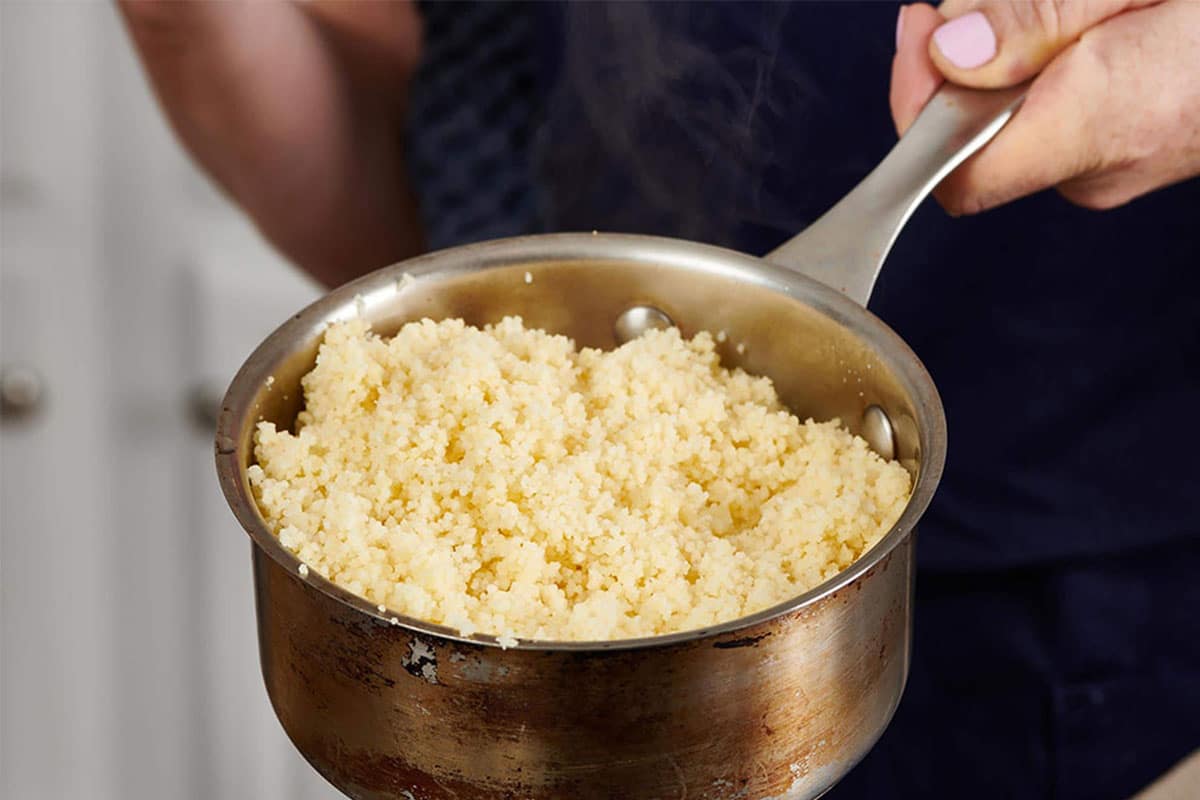
Couscous is one of those foods that many people like, but find a little intimidating to prepare. And that’s too bad, because it couldn’t be easier. It’s simply a matter of boiling water (or a mix of broth and water, which is my favorite little trick for bumping up flavor), adding the couscous, and covering it with a lid. Cook, fluff, serve, that’s it! If you can make rice, you can make couscous, and you can use and serve it similarly to rice. It’s technically a tiny pasta, but is most often cooked like a grain.
Couscous is a delicately flavored, slightly nutty side dish for all sorts of main dishes, including Slow Cooked Mediterranean Leg of Lamb with Tzatziki and Instant Pot Mediterranean Lamb Stew. It’s ideal for soaking up sauce and adding texture to soups and stews. It’s also a great base for a salad, such as this Tomato Bruschetta Couscous recipe. You can use and season quinoa in any number of ways.
What's In This Post?
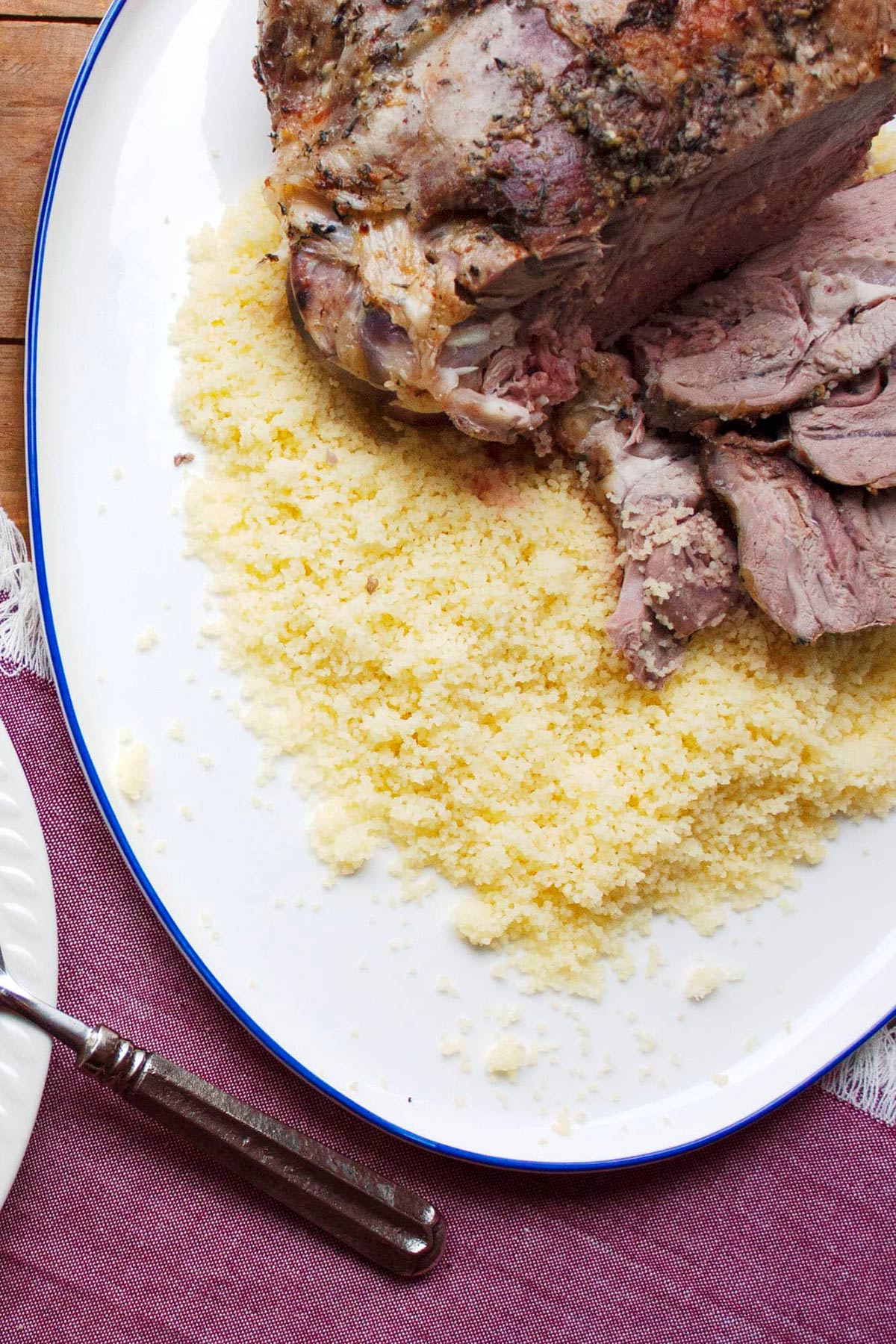
Ratio of Couscous to Water
The ratio is 1 cup couscous to 1 1/2 cups water. I like to mix half water and half broth (chicken or vegetable) to add a bit more flavor to this delicate grain-like pasta. You can double or triple the recipe as you like; just make sure to use a big enough saucepan.
By signing up, you agree to our Privacy Policy.
How to Make Fluffy Couscous
- Add olive oil and water (or water and broth) to the pot, and salt lightly.
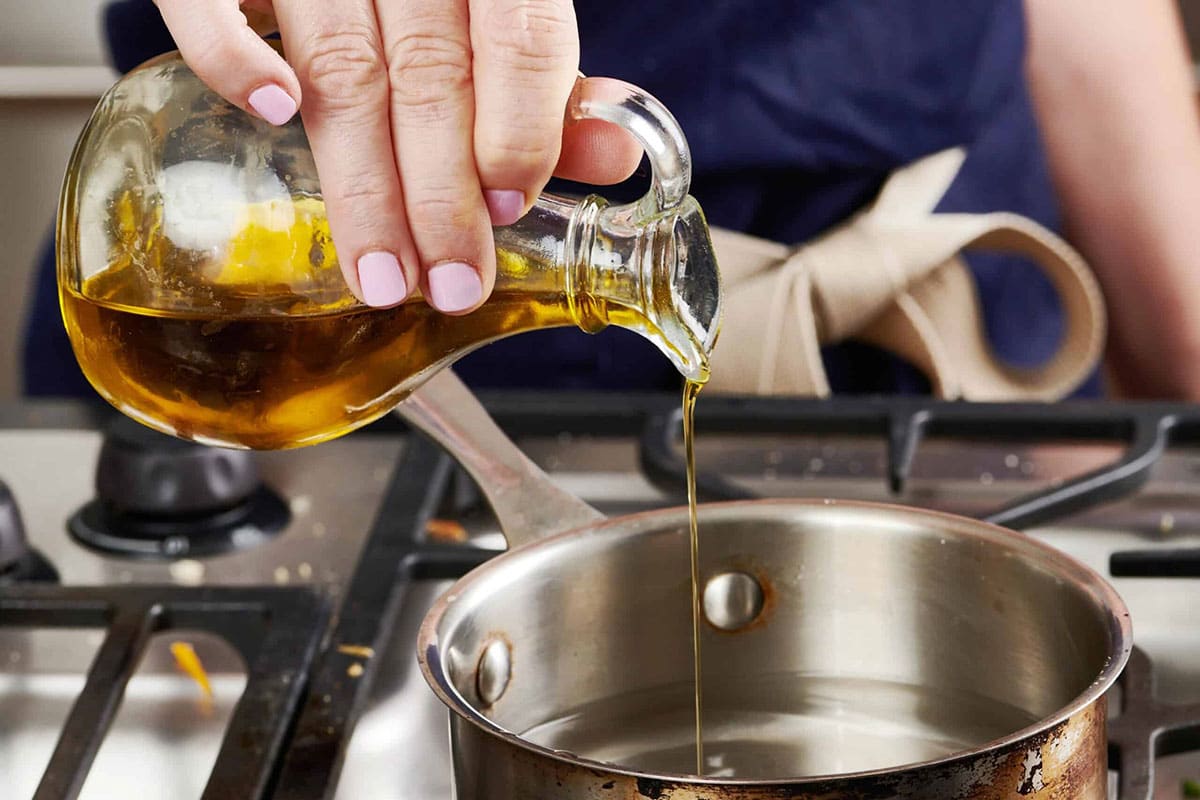
- Steam the couscous: When the water comes to a boil, stir in the couscous. Cover the pot as soon as you stir in the couscous. Leave the pot covered. Let it sit for 10 minutes off the heat, until all of the liquid is absorbed.
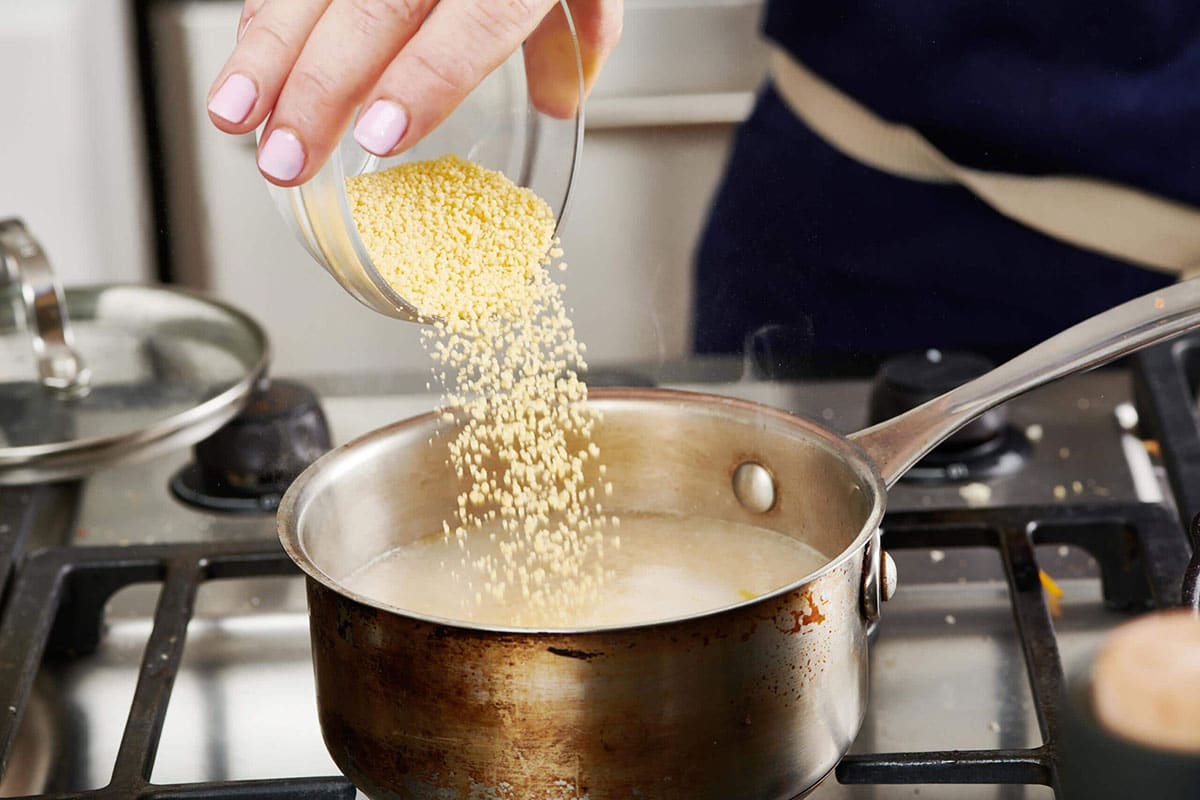
- Fluff and serve: A fork is the best tool for fluffing the couscous. See recipe for storage tips.
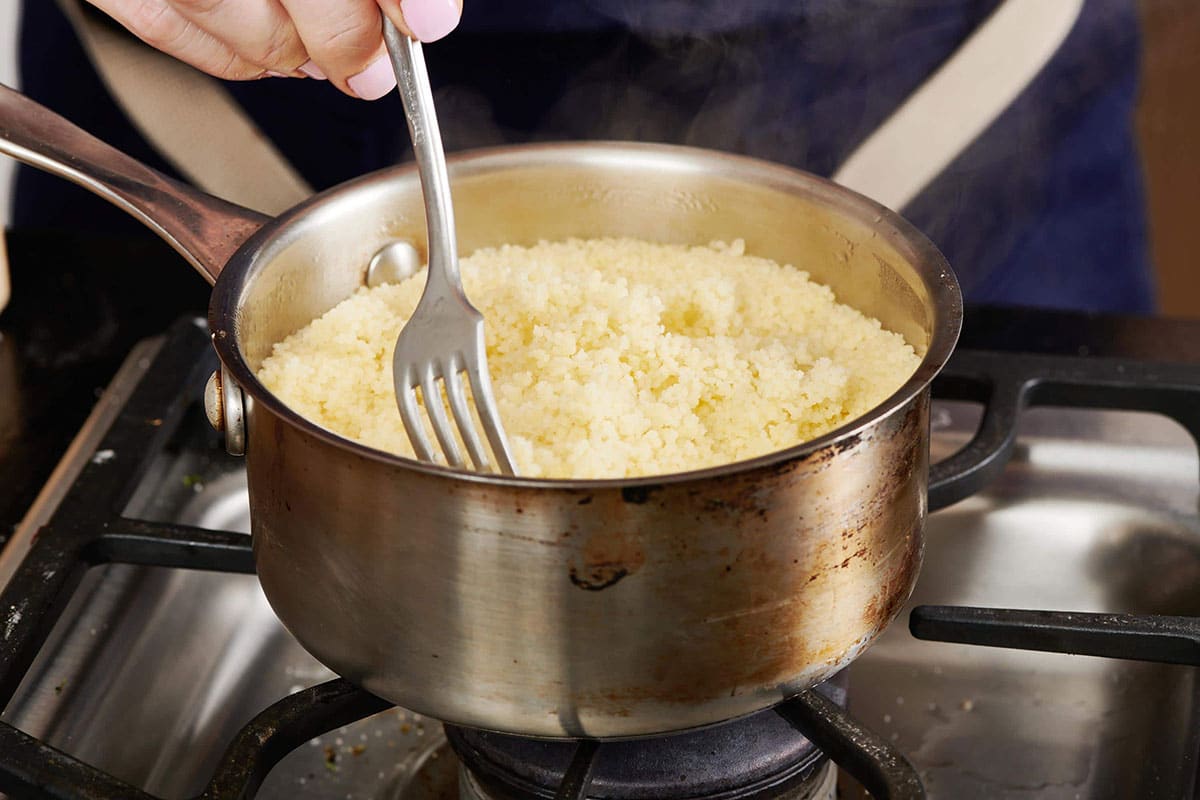
Pin this now to find it later
Pin It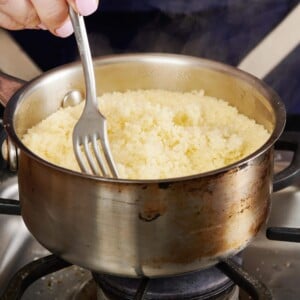
Easy, Fluffy Stovetop Couscous
Video
Ingredients
Instructions
- Heat the water (or diluted broth) in a small pot over high heat until it boils. Add the olive oil and salt, stir in the couscous, and cover. Remove from the heat and let it sit for 10 minutes, until all of the liquid is absorbed.
- Use a fork to fluff the couscous. You can fluff it and then recover it in the pot to keep it warm.
Notes
- Do not lift the lid of the pot while the couscous is steaming in the boiling water.
- Don’t let the couscous sit for more than 20 minutes without fluffing it or it might clump up.
- If you want to cool the couscous to use in salads or store for another day, cool it after you fluff it. Spread it out on a rimmed baking sheet lines with parchment paper andcool before packing it up.
- Cooked couscous will keep in the fridge in an airtight container for up to 5 days. It can also be frozen in a freezer-proof container or zipper-top bag. Label it with the date and contents, and use within 6 months.
- Couscous is made from semolina wheat, so it is not gluten-free.
Nutrition
How to Serve Couscous
Couscous can be served very simply, with a bit of butter and salt, like plain rice. Or you can mix in some chopped fresh herbs, like parsley, cilantro, mint, or whatever flavors work with the other dishes you are serving. See below for other recipe ideas for couscous.
Recipes With Couscous
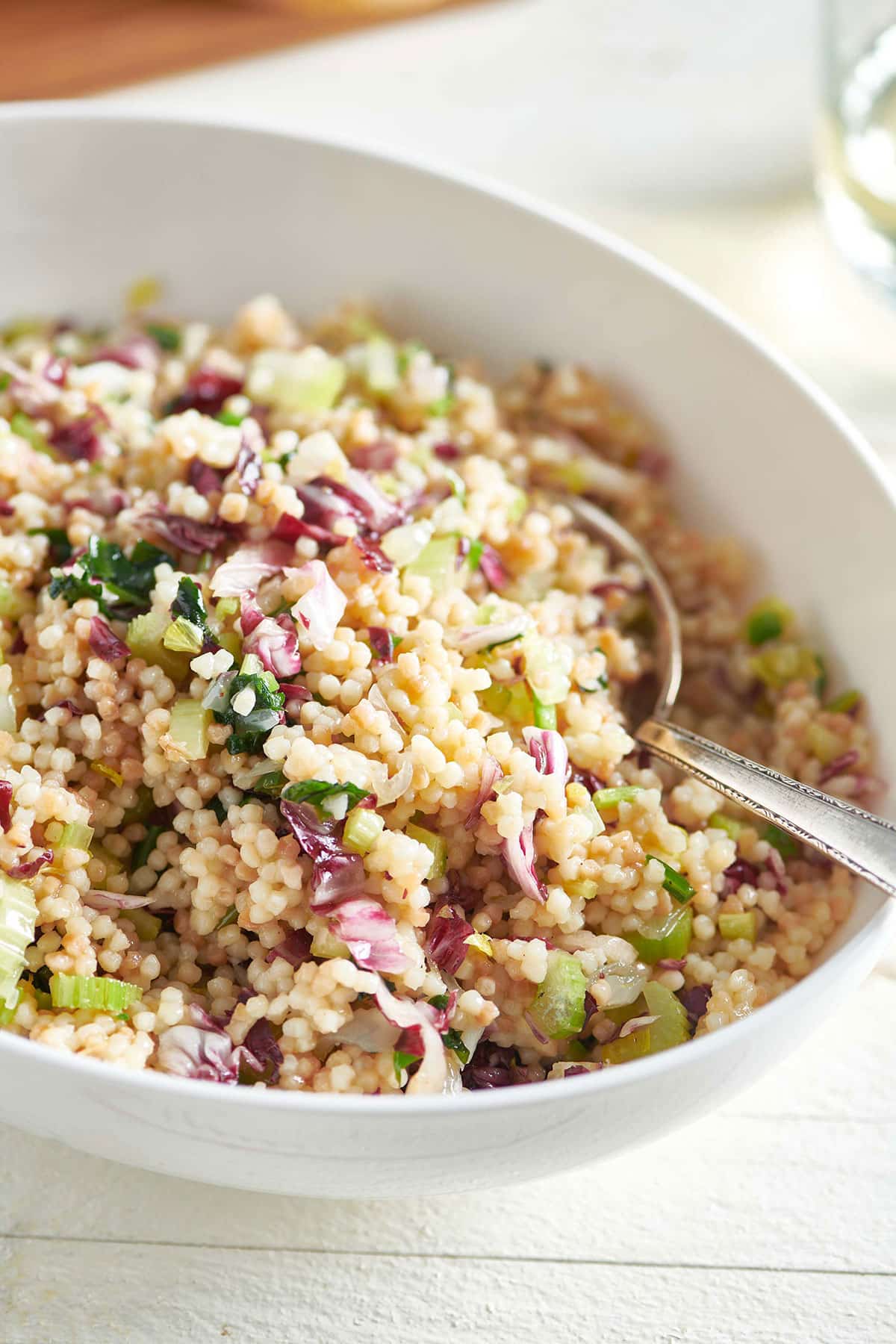
Couscous FAQs
Couscous is often lumped in with the grain family, but in fact, it’s a pasta, a tiny pasta made of crushed semolina wheat. There is also Israeli couscous (also called Mediterranean or Pearl couscous), which is fantastic, but here we’re focusing on the teeny tiny couscous most commonly available.
The couscous we most often find is marketed as commercially made, pre-steamed, and dried. And while couscous is a staple of North African and Middle Eastern cooking (Algeria, Morocco, Tunisia, Israel, and more), it is often served as a base for vegetables.
Couscous is not gluten-free! It is a teeny tiny par-cooked pasta made from semolina wheat. The wheat isn’t milled like the wheat used in traditional Italian or Asian pastas, so while it looks like a grain, it’s not.
Couscous is healthier than traditional pasta, which contains more processed wheat. It’s also available in whole wheat versions, which add another layer of nutritional benefits. Brown rice has more nutrients than couscous, but whole wheat couscous has nice fiber and some good vitamins and minerals within.
